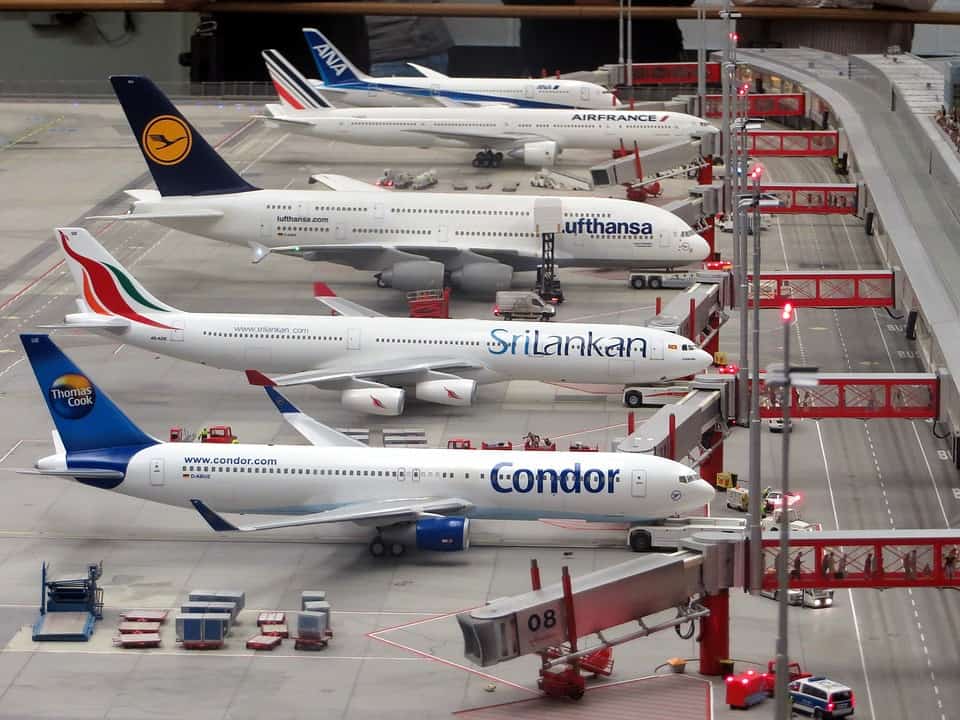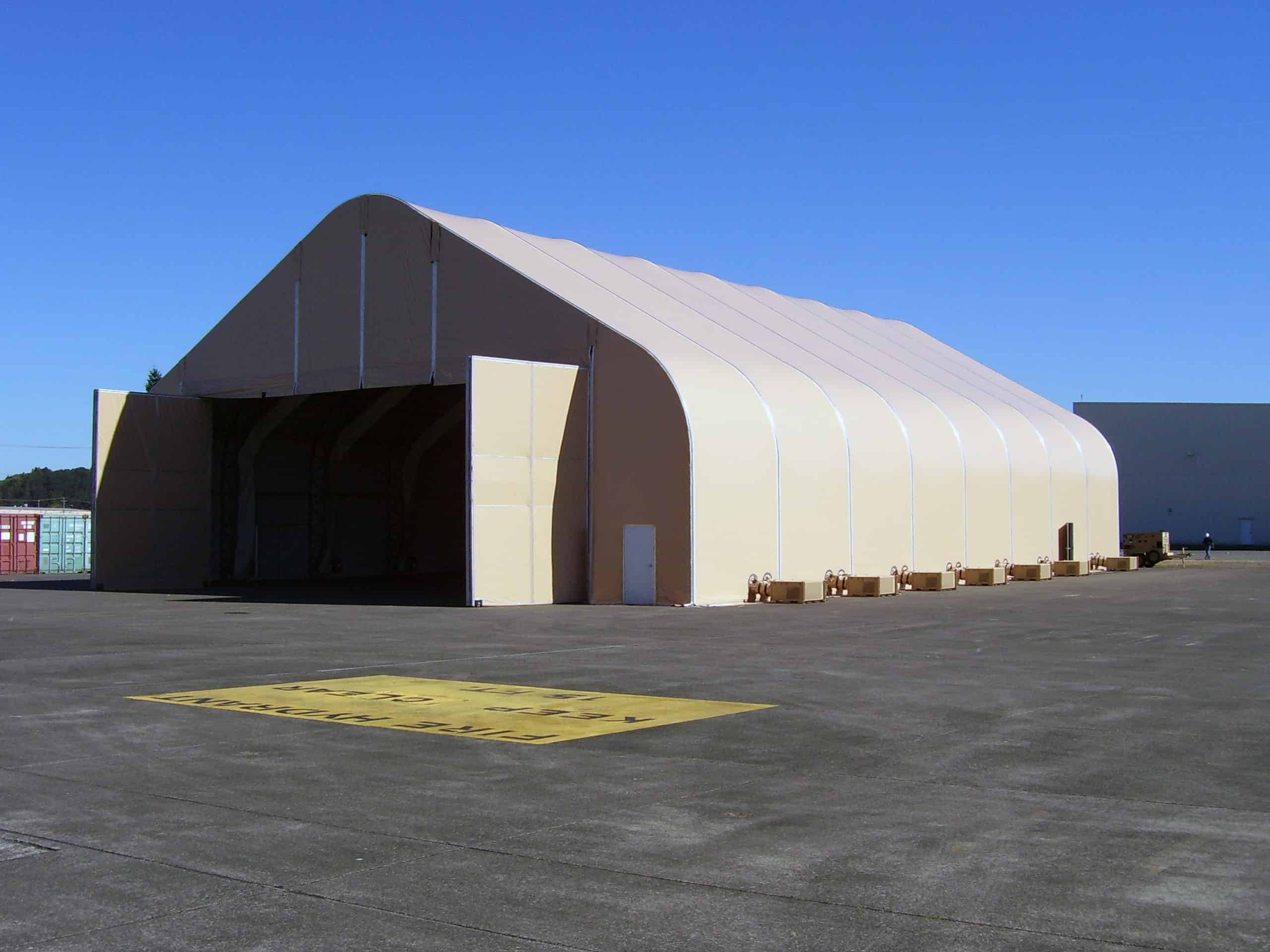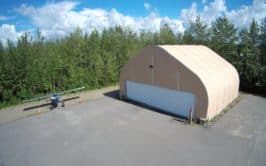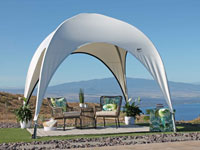Air travel has connected cultures across the globe for over a century. Airport facilities were shiny and new at one time. But now, many are becoming outdated. As a result, the industry is focusing on improving efficiency. And engineered fabric buildings for airports can help with exactly that.
Although pop culture paints 1960s Pan Am travelers as cutting-edge for their time, a lot has changed. What was once the latest and greatest is now in need of repair. Airport designs of the 1960s no longer fit with the increasing demands of today’s travelers, airlines, and efficiency needed for future airport operations
As a result, major airports are undergoing renovations to improve. Additionally, newer, smaller airports are popping up and catering to private aircraft and charter companies. And engineered fabric structures are stepping in to provide the needed airport infrastructure.
With the majority of the airports in the United States being built in the 1960s, now, many of them need repairs, additions, or complete rebuilds. But this can be difficult to do while maintaining operations and minimizing costs. That’s why many are choosing engineered fabric buildings for airports.
Engineered Fabric Building Solutions for the Future of Airports
Today’s travel demands increase with each unveiling of the latest technology. But the logistics behind both rebuilding and renovating airport facilities is complex. In addition, the construction can add strain to already struggling operations. These negative effects trickle down, impacting businesses, travelers, and workers.
To keep facilities running smoothly, engineered fabric buildings can serve as temporary airport facilities during airport remodeling or renovation projects, as well as tearing down old airport buildings and replacing them with new state-of-the-art and modern fabric buildings like those from Alaska Structures®.
[Related: Constructing Airports and Facilities]
Why Custom-Designed Fabric Buildings for Airport Operations?
No two airports are exactly alike. But, what they have in common are safety and security requirements. Airports must follow Federal Aviation Administration (FAA) rules when building. Doing that can be costly and time-consuming with traditional building materials.
Fabric Buildings Save on Building Time and Costs
On the other hand, fabric buildings provide superior alternatives to conventional airport construction. In fact, customizable fabric buildings from Alaska Structures are quick to assemble. And they provide a cost-effective alternative to long construction times. By avoiding costly and time-consuming interruptions, fabric buildings can even replace airport buildings altogether.
Infrastructure for the Modern Age
With fabric buildings, airports can also be more effective for the modern age.
Fabric buildings provide superior alternatives to conventional airport construction methods that are both lengthy and costly. Due to the high cost of traditional airport renovations, fabric structures have become great opportunities to minimize cost and optimize flexibility.
For example, Alaska Structures’ large selection of fabric building models provides endless options to custom-design an airport facility that meets current and future needs. In-house experts can design buildings with key functions, including the following:
- Ticketing areas
- Security gates
- Retail space
- Terminals
- Waiting areas
- Restrooms
- Dining areas
- Entertainment areas
Alaska Structures has provided tensioned fabric structures for airport facilities to over 85 countries around the world. These custom buildings meet specific demands to support all features of airport operations. These include:
- Airplane hangars
- Helicopter hangars
- Baggage storage facilities
- Air cargo distribution facilities
- Ground support buildings
- Airport vehicle storage
- Warehousing and storage facilities
- Buildings for airport terminals
- On-site airport workshops, maintenance and repair facilities
- Covered walkways
- Security screening facilities
- Airport fire station buildings
You don’t have to halt operations when rebuilding or renovating your airport facility. Instead, fabric buildings allow airports to easily expand or replace existing infrastructure.
[Related: Advantages of Fabric Buildings Over Traditional Structures]
Safe, Strong, and Compliance-Friendly
Alaska Structures’ in-house design and engineering teams are able to design airport facilities using fabric buildings to meet even the most demanding building requirements. All of our custom fabric buildings are designed to meet building codes for each specific location.
The proven durability of engineered fabric buildings from Alaska Structures allows them to withstand extreme weather conditions while providing a safe and comfortable interior space for travelers and airport staff.
Fabric Buildings Offer Many Energy-Saving Benefits
Fabric buildings from Alaska Structures are designed to be used in extreme environments like the numbing cold of the north or the blistering heat of the desert. Our fabric membrane structures allow airports to quickly construct energy-efficient facilities that can be insulated and heated or cooled to protect travelers, airport staff, equipment, and aircraft.
Optional additions are also available to increase energy efficiency even further.
Translucent Fabrics
Always popular, translucent fabrics allow natural light into the structures. Taking advantage of this cost-effective option reduces the need for interior lights during the day. Our translucent fabric membranes are designed to diffuse light, creating a soft light source capable of brightening the interior of our structures while reducing energy consumption for artificial lighting.
Proprietary Insulation
Airports can drastically reduce energy consumption with Alaska Structures’ proprietary insulation systems. The Alaska EnerLayer® and SuperLayer™ are supplemental insulation systems designed to seamlessly integrate with any fabric building from Alaska Structures.
- EnerLayer®: Add an additional layer of insulation. It reduces energy consumption while maintaining comfortable temperatures.
Environmental Control Units
Environmental control units (ECU) are another way to provide comfortable interior temperatures. Designed specifically for extremely hot, humid, cold, and dusty environments, the Alaska ECU™ is a military HVAC system that is available for commercial applications. The Alaska ECU is available in many sizes, including 2.5-ton HVAC, 5-ton HVAC, and 10-ton HVAC.
[Related: Fabric Buildings & Energy Efficiency]
Green Fabric Buildings to Offset Carbon Footprint
Air travel, air freight, and general airport operations all create a heavy carbon footprint. While offsetting the carbon footprint is difficult, the design and construction of the infrastructure used for airports can be more “green.”
To start, Alaska Structures uses lean manufacturing methods. As a result, we can reduce waste materials. Any over-produced materials are recycled rather than disposed of.
Alaska Structures’ fabric buildings are a green building solution by design, use fewer materials, and incorporate many energy-saving features. It’s a major step toward greener airport terminals.
In addition, our fabric structures have minimal foundation requirements. So, buildings can anchor to most level surfaces with less site preparation. Even this seemingly small detail is a step in the green direction.
By comparison, conventional construction could last years to complete full airport builds or remodels. By choosing Alaska Structures, airports can minimize the waste and air pollution that comes with standard and lengthy construction schedules.
[Related: Aircraft Hangar Buyer’s Guide]
How to Build Airports to Meet the Growing Needs of Travelers
Whether you are looking for a temporary terminal relocation while your airport is under construction or undergoing a renovation or you want to permanently embrace the benefits of fabric buildings, our in-house design and engineering teams can design fabric buildings to meet your unique needs.
Trusted by small and major airports around the world, our fabric buildings have proven their rugged durability to outlast other prefabricated buildings. With shorter build times, leaving a smaller carbon footprint, and achieving cost savings, it’s no wonder that fabric buildings have become the go-to alternative to typical buildings made of wood, steel, brick, and concrete slab materials.
If you are considering building options for an upcoming airport construction or renovation project, connect with an Alaska Structures representative today to find out how we can easily meet your needs.


















































































Leave a Reply